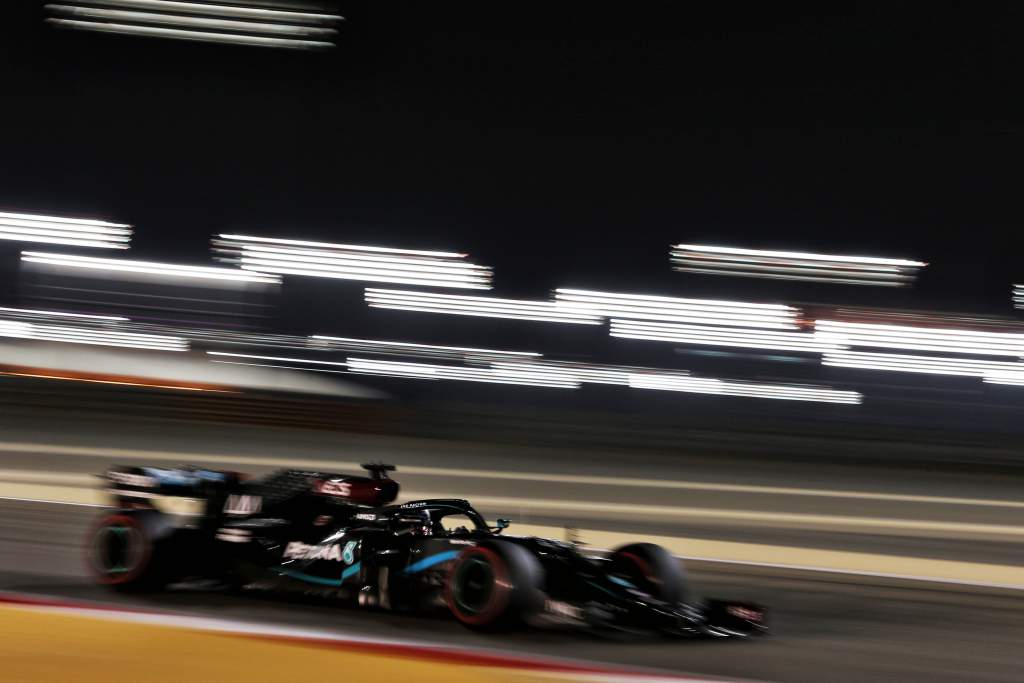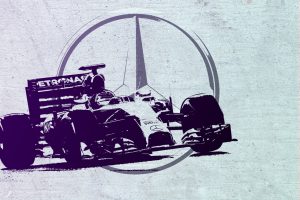Up Next

Hidden away in the small detail of George Russell’s dissatisfaction with how he was driving at Sakhir’s Turn 1 last week is the very essence of why Lewis Hamilton is so much more than just a brilliantly talented driver. The significance of that difficulty Russell was describing is profound.
“It felt really alien, to begin with,” said Russell, “and it’s just a really different way of driving.
“You’re trying to unlearn what I learned at Williams and relearn how to drive this car fast.
“I don’t know what it was. I just couldn’t get on the throttle” :: George Russell
“I’ve been really struggling at Turn 1 all weekend. Oddly last week [in the Williams], that was my strongest corner and we were really strong there.
“This weekend I’ve been really weak [there] compared to Valtteri [Bottas]; he’s been taking loads of laptime out of me. That was my weak point.
“I don’t know what it was. I just couldn’t get on the throttle.
“After that every single time from Turn 4 onwards it felt great. The car was absolutely on rails and it was a real joy to drive.
“Just that Turn 1 and 2 were really letting me down. I’m sure I’m going to look on the data and Valtteri is going to be much quicker than me through there again and it’s going to frustrate me but nevertheless…
“It’s been really tough for me to jump in last minute, learn a new car, work with new engineers, understand the set-up, how to make this car go fast. Because it was a completely different ballgame, really.”
The difficulty he was experiencing was that his muscle memory from the Williams was insisting he turn in earlier and less aggressively into this slow corner.
But the Mercedes W11 is incredibly strong in this sort of manoeuvre and can tolerate a much more aggressive approach to such corners without the rear tyres become overwhelmed.
That is probably its key advantage over last year’s car – and it’s something the chassis team has worked very hard at creating, at the urging of Hamilton.
It’s something he explained in our interview with him a few weeks ago.
“Because we’ve have had long cars we’ve had great downforce but been quite poor in low-speed corners,” Hamilton explained.
“The car would not rotate as well as we’d like. There’s a limitation with these tyres. The front has a limitation, the rear has a limitation, grip-wise.
“There’s saturation, there’s thermal deg and there’s only a certain amount you can do with the mechanical balance before it affects the other end. It’s like a see-saw.
“The front was a lot more understeery last year; you struggled a lot more when you went over the tyre and no matter how much you changed the mechanical balance it didn’t really fix it.”

With the W11 Mercedes went to engineering extremes to deliver the sort of car Hamilton was pushing for, but without surrendering the established benefits of the long car.
The team swept the rear suspension back a long way so as to create more downforce-creating volume between the rear tyres and diffuser.
“When I was at McLaren they were doing what they wanted to do” :: Lewis Hamilton
It did it by mounting the lower leg of the rear wishbone into the crash structure, rather than the gearbox ahead of it. This allowed the whole suspension to be swept back. It was a massive engineering challenge.
What that gave was a car with rear tyres that would no longer be overwhelmed by a super-positive front end set-up. The car could be hustled into slow corners, late and positive on turn in, without the rear becoming upset.
This is the ‘alien’ driving style that Russell’s Williams-formed muscle memory was struggling to overcome at Turn 1-2 of the Sakhir circuit.
This quality of the W11 is the biggest reason for its increased performance over its predecessor – and much of that direction came from Hamilton’s urging, something of which he’s rightfully proud.
It’s part of the complete driver he’s focused on becoming ever since being beaten to the 2016 title by team-mate Nico Rosberg. But it was building even before then.

“When I was at McLaren they were doing what they wanted to do,” said Hamilton.
“Engineers often think they know better than the driver and… or perhaps sometimes don’t feel comfortable listening to the driver, I don’t know.
“That was the best thing when I joined this team. I don’t come in saying ‘do this, do that’. But I might say ‘OK, here’s a thought. How about this, how about if we did that? This would be better.’
“And it’s become a collaboration since I came. And they’ll come back and say ‘what if we did it like this?’ and I’ll say ‘yeah, that would be perfect’. So you feel like you’re climbing together and there’s been less pushback.
“I’m always fully up to date with where the future car is and what the limitations are and what they’re trying to focus on, just … like sometimes I’ll go to the windtunnel and ask them, I’ll say to the head aerodynamicist, ‘OK, take me round the car, I’m fascinated by what you guys are working on’.
“And they’ll tell me the troubles and obstacles they’ve come across and not so much now but in the past they might say, ‘oh, we’re working on this area’, and I’d say ‘but that’s not the issue, what you working on that for?’ ‘We thought you were…’ so things can get lost in translations.
“I’ve always found that a good and quite a useful use of time because then, that guy’s the leader of the whole aero group, and rather than hearing it through the grapevine about what’s needed, I’ve told him direct.”

Russell has in the past commented upon how much he learned – before his own F1 career began last year – just listening to Hamilton in the Mercedes briefings and observing the way he works.
There’s surely plenty more that can be learned too – and the sooner Russell gets exposed to that, the sooner he can progress himself to tap his obviously vast potential.






